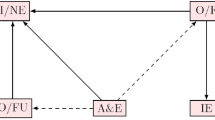Abstract
The institution of prospective payment systems by many health care insurers has drawn increased attention to case-based financial planning in hospitals. When hospital revenues are directly linked to patient diagnoses rather than to the types and quantities of services supplied to patients, managers must be aware of the financial implications of different case mixes and must be prepared to influence insurers' price structures. A case-based financial planning model is presented here for the purpose of assisting managerial decision making in the strategic areas of case mix planning and pricing. The computerized model characterizes hospitals as product manufacturers, the product being discharged patients. Diagnosis serves to differentiate the “products”; however, diagnoses are grouped by payor and similar treatment cost experiences to create a limited set of managerially meaningful case types. Diagnostic and treatment costs are also aggregated to facilitate the modeling of the hospital production process. The computerized model projects the number of patients of each case-type and total patient volume, based on estimated patient volume growth rates. The model also projects prices and contribution margins for each case-type, as well as total contribution to hospital overhead. Testing the model with a hypothetical example of a hospital strategic planning problem demonstrates the model's potential as a decision-making aid in case mix planning and case-type pricing. It also reveals several model shortcomings that require further developmental effort.
Similar content being viewed by others
References
Bentley, J.D., and Butler, P.W., Measurement of case mix.Topics in Health Care Financing, Summer 1982, pp. 1–12.
Poggio, F.L., How to develop or buy a computerized financial planning model.Healthcare Financial Management, November 1979, pp. 32–40.
Keegan, A.J., Hospitals will continue to treat all DRGs to snare ‘Contribution Margin’.Modern Healthcare, September 1983, pp. 206–208.
Horn, S.D., and Sharkey, P.D., Measuring severity of illness to predict patient resource use within DRGs.Inquiry 20:314–321, 1983.
Coleman, J.R., Kaminsky, F.C., and McGee, F., The state of the art of financial modeling.Hosp. Health Serv. Admin. 25:31–55, 1980.
Serway, G.D., and Rath, G.J., Computerized projected cash flow statement to plan hospital expansion.Inquiry 4:59–63, 1972.
Stepp, M.,et al. Now and then financial planning.Hospital 48:42–45, 1974.
DuFour, R., Using financial models for strategic planning.Hosp. Progr. 35–40, 1972.
DuFour, R., Computer models: Two ways to do financial forecasts.Mod. Hosp. 103–109, 1973.
Bertram, D.A.,et al. Hospital case mix groupings and generic algorithms.Quality Rev. Bull. 8:24–30, 1982.
Reiss, J.B., A conceptual model of the case-based payment scheme for New Jersey hospitals.Health Serv. Res. 15:161–175, 1980.
Williams, S.V.,et al. Improved cost allocation in case-mix accounting.Med. Care 20:450–459, 1982.
Shepard, D.S., and Soule, D.N., Estimating hospital costs by diagnosis for population-based analysis.J. Commun. Health 7:2–20, 1971.
Soliman, S.Y., and Hughes, W.L., DRG payments and net contribution variance analysis.Healthcare Finan. Manag. 78–86, 1983.
Forsyth, G.C., and Thomas, D.G., Models for financially healthy hospitals.Harvard Bus. Rev. 106–117, 1971.
Kachitvichyannkul, V.,et al., DRG resource utilization modeling system.Simulation in Health Care Delivery Systems (Standridge, C.R., ed.), SCS Conference, 1984.
Heck, S., and Esmond, T., Financial modeling/case-mix analysis.Comp. Healthcare 50–52, 1983.
Brandeau, M.L., and Hopkins, D.S.P., A patient mix model for hospital financial planning.Inquiry 21:32–44, 1984.
Turban, E., Decision support systems in hospitals.Health Care Manag. Rev. 35–42, 1982.
Smartt, P. C., ‘Ingredients’ for a successful decision support system.Data Manag. 26–33, 1983.
Farwell, D.C., A model based approach to decision support flexibility.Interfaces 79–86, 1982.
Fuerst, W.L., and Martin, M.P., Effective design and use of computer decision models.MIS Quart. 17–26, 1984.
Menkus, B., Practical considerations in decision support system design.J. Syst. Manag. 8:32–33, 1983.
Martin, M.P., Determining information requirements for DSS.J. Syst. Manag. 7:14–21, 1982.
Mediflex Systems Corporation, An overview of Mediflex Systems. San Francisco, 1984 (mimeographed).
Gray, P.,Student Guide to Interactive Financial Planning System McGraw-Hill, New York, 1983.
California Department of Health, Health Facilities Commission,Inventory of Financial and Statistical Information for California Hospitals, Fiscal Years Ending June 30, 1978–June 29, 1979, May 1980.
California Department of Health, Health Facilities Commission Report No. 11-83-10.Individual Hospital Data for California, Vol. 3, June 1983.
Author information
Authors and Affiliations
Rights and permissions
About this article
Cite this article
Hatcher, M.E., Connelly, C. A case mix simulation decision support system model for negotiating hospital rates. J Med Syst 12, 341–363 (1988). https://doi.org/10.1007/BF00992684
Issue Date:
DOI: https://doi.org/10.1007/BF00992684




